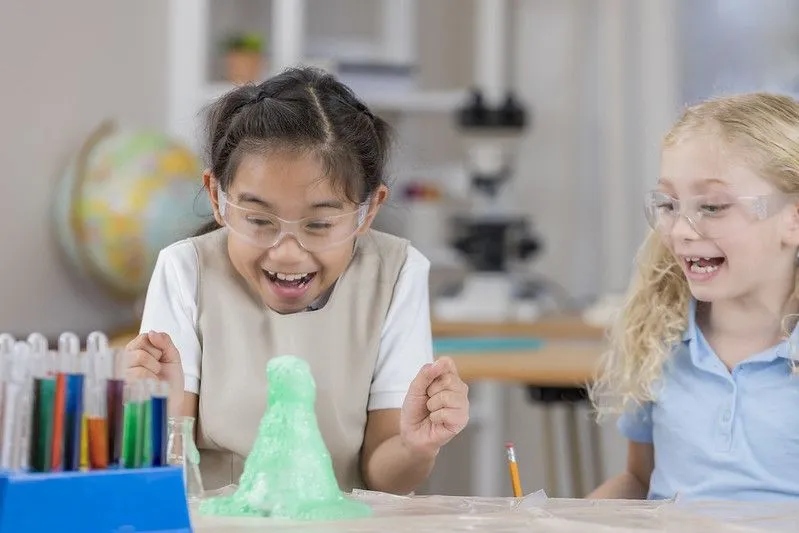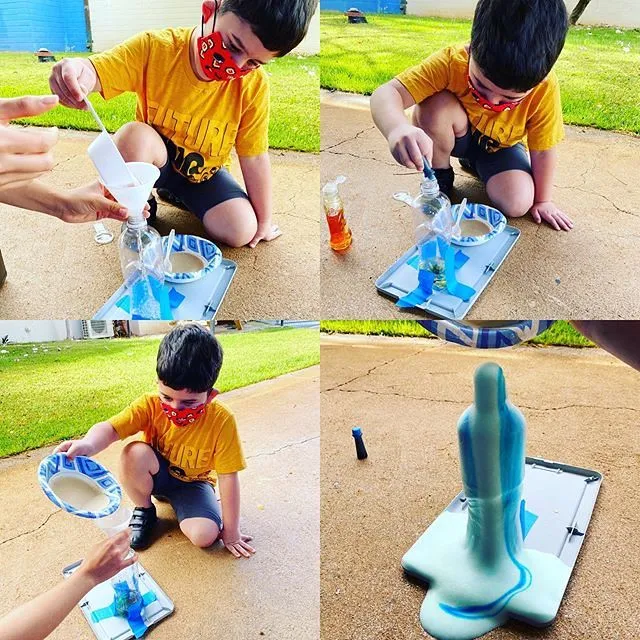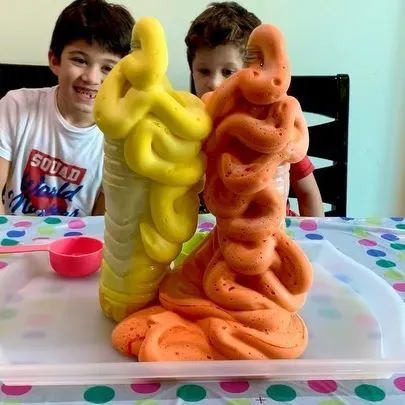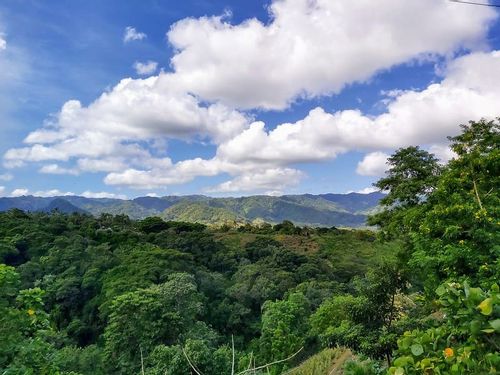FOR ALL AGES
Science experiments that make everyone go "Ooh" and "Aah" are always a big hit, and this foaming fountain of 'Elephant's Toothpaste' is one of the best.
Elephant toothpaste is such an easy experiment to do, but the results are spectacular (think foamy water feature)! This is the perfect way to make home science lessons fun and memorable. For more science experiments you can do at home, many of them using household items, check out these great ideas for young kids and teens.
This is an impressive experiment, but be aware that the contents will overflow the bottle and may expand more than you expected! Make sure you conduct the experiment where it can’t stain or damage anything, and on a surface that is easily cleaned. Place it on a tray or take the experiment outside. Also, be aware that the hydrogen peroxide used in the experiment can irritate the skin, so we suggest that safety goggles and gloves are worn. The foam should not be touched with bare hands due to the hydrogen peroxide but don't let that put you off! This experiment is perfectly safe if the right precautions are taken.

Safety goggles.
Gloves.
A bottle of 6% or 9% hydrogen peroxide liquid (this can be found in most chemists).
1 teaspoon washing up liquid.
1 tablespoon dry yeast.
3 tablespoons warm water.
Food colouring (you could also use paint).
Empty plastic water bottle.
A tray.

1.Put on your goggles and gloves.
2.Put the funnel into the top of the water bottle, add 200ml of hydrogen peroxide.
3.Dribble a few drops of food colouring down the side of the bottle.
4.Add the washing up liquid and then swirl the bottle around carefully to mix the two liquids together.
5.Next, mix the yeast with some warm (not hot) water.
6.Now it’s going to get exciting! Add the yeast mixture to the bottle, take away the funnel and stand back!
So, how does this work? The yeast is the catalyst (it increases the rate of a chemical reaction without undergoing any permanent chemical change of its own). It makes the hydrogen peroxide break down into water and oxygen. And because this produces a large amount of oxygen, this speedily makes its way out of the bottle. The soapy water, which is from the washing up liquid combining with hydrogen, catches the oxygen, making bubbles, and this turns into foam. You will notice the bottle is warmer than when you started - this is because you created an exothermic reaction when the hydrogen peroxide was breaking down. An exothermic reaction means the energy created by the chemical reaction is transferred to the surroundings (in this case the bottle) and causes the temperature to increase!

If you want to make this experiment look like real toothpaste, try dribbling red and blue food dye down opposite sides of the bottle to make the bubbles and foam multicoloured!
Older kids can turn this into a more formal experiment by writing up the ingredients and method, then recording the results. Try using different colour combinations, and recording the way in which the 'toothpaste' forms when it foams out of the bottle.
Younger kids can use a less strong solution of hydrogen peroxide (3%) if you can get hold of it. If this is not possible, you can conduct the actual experiment for them. They will still be thrilled by the giant foaming fountain of Elephant Toothpaste that appears!
Read The Disclaimer
At Kidadl we pride ourselves on offering families original ideas to make the most of time spent together at home or out and about, wherever you are in the world. We strive to recommend the very best things that are suggested by our community and are things we would do ourselves - our aim is to be the trusted friend to parents.
We try our very best, but cannot guarantee perfection. We will always aim to give you accurate information at the date of publication - however, information does change, so it’s important you do your own research, double-check and make the decision that is right for your family.
Kidadl provides inspiration to entertain and educate your children. We recognise that not all activities and ideas are appropriate and suitable for all children and families or in all circumstances. Our recommended activities are based on age but these are a guide. We recommend that these ideas are used as inspiration, that ideas are undertaken with appropriate adult supervision, and that each adult uses their own discretion and knowledge of their children to consider the safety and suitability.
Kidadl cannot accept liability for the execution of these ideas, and parental supervision is advised at all times, as safety is paramount. Anyone using the information provided by Kidadl does so at their own risk and we can not accept liability if things go wrong.
Kidadl is independent and to make our service free to you the reader we are supported by advertising.
We hope you love our recommendations for products and services! What we suggest is selected independently by the Kidadl team. If you purchase using the buy now button we may earn a small commission. This does not influence our choices. Please note: prices are correct and items are available at the time the article was published.
Kidadl has a number of affiliate partners that we work with including Amazon. Please note that Kidadl is a participant in the Amazon Services LLC Associates Program, an affiliate advertising program designed to provide a means for sites to earn advertising fees by advertising and linking to amazon.
We also link to other websites, but are not responsible for their content.
Was this article helpful?



Browse Category



We’ll send you tons of inspiration to help you find a hidden gem in your local area or plan a big day out.



Check your inbox for your latest news from us. You have subscribed to:
Remember that you can always manage your preferences or unsubscribe through the link at the foot of each newsletter.